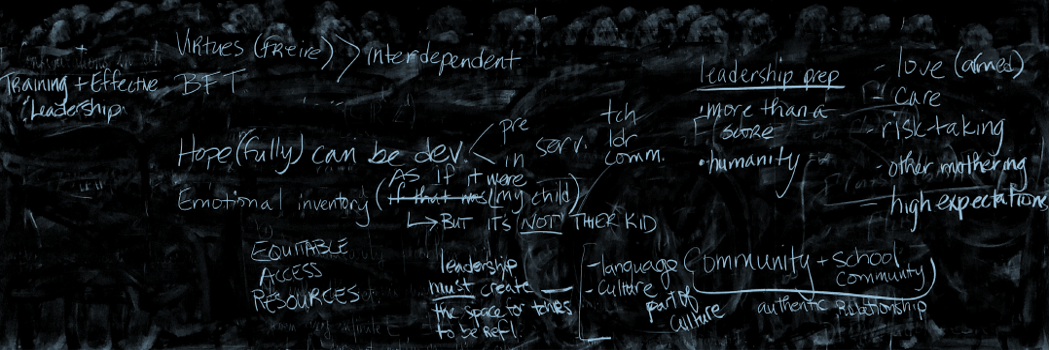I felt reinvigorated after this week’s readings. I woke up the next day with a new sense of hope and urgency. I don’t often send people articles but I had to share Beauboeuf-Lafontant’s (2002) article with loved ones. In part as a reminder of the love, fortitude, and commitment it takes for Black teachers to keep challenging oppressive schools, systems, and practices in spite of the “recognition that social injustice is deep-seated and not easily dismantled” (p. 80). This is deep labor that goes unrecognized. And while in Teaching to Transgress, bell hooks’ writes about the strength she gained from the Black women educators at her all-Black schools when she was younger, somehow, it felt like the first time that I’d seen maternal care aligned with political clarity and an ethic of risk in an article.
I have been thinking about the importance of Casey’s (1990) findings in Beauboeuf-Lafontant’s article. The marked difference between progressive Jewish, Catholic, and African American teachers’ understanding of the “maternal image”. That unlike the other groups, the Black teachers in this study embraced a maternal image, saw “the mother-child relationships as central to their resistance to domination, both patriarchal and racial” (p. 76). And having most often been surrounded by the former, the need to deconstruct the maternal, I have felt alone in asking, why don’t you feel that same urgency for “other” people’s children? In Freire’s critique of the teacher as parent, lies the concern that the idea of school as family could impede action on the part of teachers, to protest or strike. But I have seen teachers prepare to strike out of a love and respect for themselves and their students. I wonder, did Freire and bell hooks ever talk about this? And how can this work impact the decisions being made by hiring, admissions, and curriculum committees in schools of education? Not only to increase the numbers of Black faculty and students but the number of Black pedagogical theorists in their syllabi.
The readings this week point to continuums and levels of care. In Wilson’s (2015) article, once again there is the reminder that individual acts of care are not sufficient. As I read about the work of this one phenomenal Black principal, I thought about all the other ones out there. And how often Black teachers and educational leaders are pushed out when they don’t accept the deficit-based views, color-blind tactics, and educational neglect of their communities, schools, classrooms, and students.
A radical care “school staff meeting” question that I haven’t ask before is: How is our school “providing care that is responsive to the structural inequalities students face” (p. 4)?




Hey
I also felt reinvigorated after this week’s readings. I wonder if it was also due to a break in classes for the video? When you share “Freire and bell hooks ever talk about this?” are you talking about striking? I am working my way through Bell Hooks ‘Teaching Community’ and I am down to share some insights.
Hi!
I love the question that you pose to teachers: why don’t you feel that same urgency for “other” people’s children? I have also wondered about this. It seems to be entrenched in a deep commitment toward communal responsibility. I am reminded of this example of a Black mother of a son I interviewed, in which whenever asked about what messages/goals she had for her son in relation to race, education, future opportunities, etc, she would always go back to I tell all the kids on my block the same thing. For example, she shared that she would always tell all the young boys on the block to get their hands out f their pocket, or about getting their homework done, or if they were hungry. For her the responsibility of mothering, was beyond simply her relationship with her biological son.
Mariatere, I love the question you pose at the end of your reflection (the staff meeting question): “How is our school providing care that is responsive to the structural inequalities students face?” Thanks for the very excellent idea (let us know if you “operationalize” it).